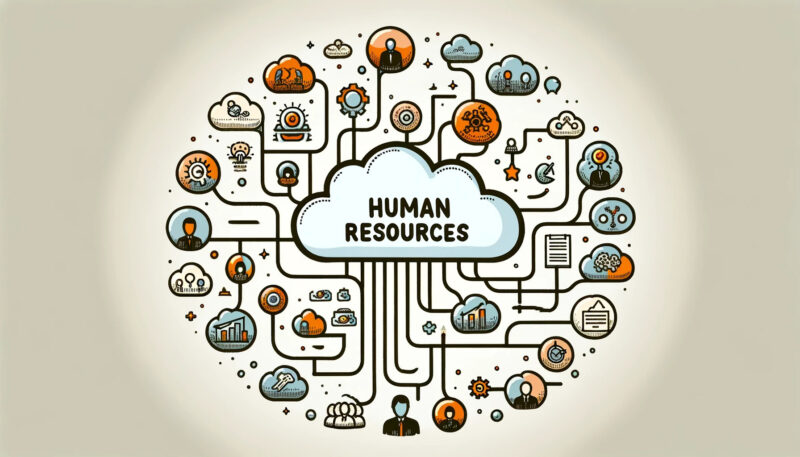Resource management during incidents is a critical component of effective and efficient emergency response. Among the various tasks involved, one stands out as pivotal in ensuring seamless coordination and optimization of resources: resource coordination.
This extensive article delves into the complexities and nuances of resource coordination, unraveling its significance and mechanisms in incident management.
Resource Management

Resource management in the context of incident response refers to the systematic process of identifying, acquiring, allocating, and employing resources efficiently during an emergency. It encompasses a wide range of activities, from pre-incident planning to post-incident recovery.
Effective resource management is crucial for minimizing the impact of incidents, whether they are natural disasters, technological accidents, or human-caused events.
Essence of Resource Coordination
At the heart of resource management is resource coordination. This task involves harmonizing the efforts of different entities and individuals to ensure that the right resources are available at the right time and place.
It is not merely about having enough resources; it’s about the strategic deployment and utilization of these resources to achieve the best possible outcomes during an incident. Resource coordination transcends mere logistical arrangements.
It encapsulates the processes of communication, decision-making, and collaboration among various stakeholders. This ensures that resources are not just pooled together but are directed towards unified objectives in a coherent and synergistic manner.
The Role of Communication in Resource Coordination

Effective communication is the cornerstone of resource coordination. It involves the exchange of information about resource availability, needs, and constraints among various stakeholders.
This flow of information must be clear, timely, and accurate to ensure that resources are deployed efficiently. Communication in resource coordination also involves understanding the needs and capabilities of different entities.
This mutual understanding is critical in aligning resources with the specific requirements of an incident, thus avoiding redundancy and ensuring that gaps in resource needs are appropriately filled.
Decision-Making and Resource Allocation
Resource coordination is heavily reliant on sound decision-making processes. Decision-makers must weigh various factors, such as the urgency of needs, the availability of resources, and the potential impact of their deployment.
This requires a comprehensive understanding of the incident, an assessment of available resources, and an anticipation of future needs. The allocation of resources during an incident is a dynamic and often complex task.
It involves prioritizing resources based on the severity and urgency of the situation, the potential for saving lives, and the overall strategy for incident management. It’s a balancing act between immediate needs and long-term objectives.
Collaborative Approach to Resource Coordination
Collaboration is a vital component of resource coordination. Incidents often require a multi-agency or multidisciplinary approach, where different organizations bring unique skills and resources to the table.
Effective resource coordination leverages these diverse capabilities through a collaborative framework. This collaboration involves establishing joint objectives, sharing information and resources, and coordinating actions to ensure a unified response.
It requires trust, mutual respect, and a commitment to common goals among all stakeholders involved in the incident response.
Challenges in Resource Coordination
Despite its critical importance, resource coordination faces several challenges. These include logistical complexities, differing priorities and policies among agencies, communication barriers, and limited resources.
Overcoming these challenges requires a well-structured approach to resource management, clear communication channels, and a flexible yet coordinated strategy that can adapt to the evolving nature of incidents.
FAQs

What role does technology play in enhancing resource coordination during incidents?
Technology plays a pivotal role in resource coordination by providing tools for real-time communication, resource tracking, and data analysis. Advanced software systems enable incident commanders and resource managers to visualize resource allocations, track the movement of supplies and personnel, and analyze data to make informed decisions. Technologies like GIS (Geographic Information Systems) can be crucial for mapping incident impacts and resource deployment, while mobile communication tools ensure seamless, on-the-go coordination.
How does resource coordination differ in large-scale incidents compared to smaller, localized events?
In large-scale incidents, resource coordination becomes more complex due to the increased number and diversity of resources and stakeholders involved. There’s a higher need for centralized command structures, like an Emergency Operations Center, to manage the extensive coordination efforts. In contrast, smaller incidents often require less formalized coordination, possibly managed at a local level with fewer resources and a more straightforward command structure. The scale of an incident directly impacts the complexity of resource coordination.
Can public-private partnerships contribute to effective resource coordination? How?
Public-private partnerships can significantly enhance resource coordination by bringing additional resources, expertise, and networks to the table. Private entities often have access to resources (like logistical support, specialized equipment, or technological solutions) that can supplement public emergency services. Collaborations can lead to pre-arranged agreements for resource sharing, joint training exercises, and information-sharing platforms, all of which can streamline coordination during an actual incident.
How do cultural and language differences impact resource coordination in international response efforts?
In international incidents, cultural and language differences can pose significant challenges to resource coordination. Misunderstandings or miscommunications can lead to delays or inefficiencies. Overcoming these barriers often requires the inclusion of translators, cultural liaisons, and the use of universally understood symbols and protocols. Sensitivity to cultural norms and practices is also crucial to ensure that resource distribution and actions are appropriate and effective in different cultural contexts.
What is the role of community involvement in resource coordination during incidents?
Community involvement can be critical in resource coordination, particularly in the initial and recovery phases of an incident. Local communities often provide first-hand information about needs and resources, assist in disseminating information, and can mobilize local resources rapidly. Engaging with community leaders and groups can enhance trust, ensure that resource distribution is in line with local needs, and help in identifying volunteers and local resources that might otherwise be overlooked.
How do preparedness activities, like drills and training, enhance resource coordination during actual incidents?
Preparedness activities like drills and training are essential for improving resource coordination during real incidents. These activities help in identifying potential gaps in resources, communication channels, and coordination mechanisms. They also provide a platform for different agencies and stakeholders to understand each other’s capabilities and limitations. Regular drills ensure that all participants are familiar with protocols and procedures, reducing confusion and enhancing efficiency when coordinating resources during actual emergencies.
Final Words
Resource coordination is an indispensable task in resource management during incidents. It plays a pivotal role in ensuring that resources are not only available but are also used effectively to respond to emergencies.
Through effective communication, sound decision-making, and collaborative efforts, resource coordination helps minimize the impact of incidents and enhance the overall efficiency of emergency response. As incidents continue to pose complex challenges, the importance of resource coordination in resource management becomes ever more evident, underscoring the need for continuous improvement and innovation in this critical field.
